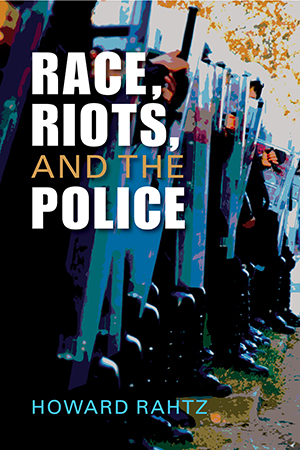Reflected almost daily in headlines, the enormous rift between the police and the communities they serve—especially African American communities—remains one of the major challenges facing the United States. And race-related riots continue to be a violent manifestation of that rift. Can this dismal state of affairs be changed? Can the distrust between black citizens and the police ever be transformed into mutual respect?
Howard Rahtz addresses this issue, first tracing the history of race riots in the US and then drawing on both the lessons of that history and his own first-hand experience to offer a realistic approach for developing and maintaining a police force that is a true community partner.
Howard Rahtz served for nearly two decades with the Cincinnati Police Department, retiring in 2007 as commander of the Vice Control Unit. He currently teaches at police academies in the area and speaks nationally on police reform. He is the author of Community Policing: A Handbook and Understanding Police Use of Force.
"Effectively contextualizes one of the most critical issues of our time: racial tensions and police. .... Rahtz presents valuable knowledge for researchers and practitioners alike. I recommend the book to anyone who is interested in contemporary police-community relations and the role of police in race riots."—Brandon Turchan, Criminal Law and Criminal Justice Books
"Wholeheartedly recommended for public library collections. In addition to educating students, police officers, trainees, and government officials, it can also serve as a baseline and valuable tool for citizens ... as we see ongoing issues in our communities."—Booklist
"An excellent book!! It covers fresh ground and offers hope of not endlessly repeating the painful mistakes of the past."—Richard Biehl, Chief of Police, Dayton, Ohio
"Race, Riots, and the Police shows how our tough-on-crime strategies have perpetuated structural racism in our criminal justice system and also changed the nature of law enforcement away from guarding our communities. But Rahtz does not just point out what has gone wrong; he provides a compelling vision of what policing can look like if law enforcement leaders have the political will and the courage to change."—Diane Goldstein, Executive Board, Law Enforcement Against Prohibition (LEAP)
"A captivating work that is an eye-opening journey into the lived reality of African-Americans in the United States today.... Incorporating graphic, sometimes alarming observations, Rahtz investigates the dynamics of power in the field of criminal justice. In this much needed contribution to the field, he brings together his skills as a practitioner and his theoretical insights to address some of society’s most compelling social problems."—Rachel L. Rayburn, Indiana University–Purdue University Fort Wayne
"This is an important book—unique in content and scope. As a retired police captain, Howard Rahtz acknowledges the historical role that police have played in helping to create the racial division in the US. Furthermore, he dares to assert that if the divide is to be bridged, and if unrest in our urban centers is to be prevented, the primary responsibility rests with the police. His book is controversial, but refreshing; creative, yet practical.It affirms the critical role of police in our society, but it is also a call for change. I could not be more enthusiastic in my praise of this compelling work."—Gerald S. Reid, University of Cincinnati






